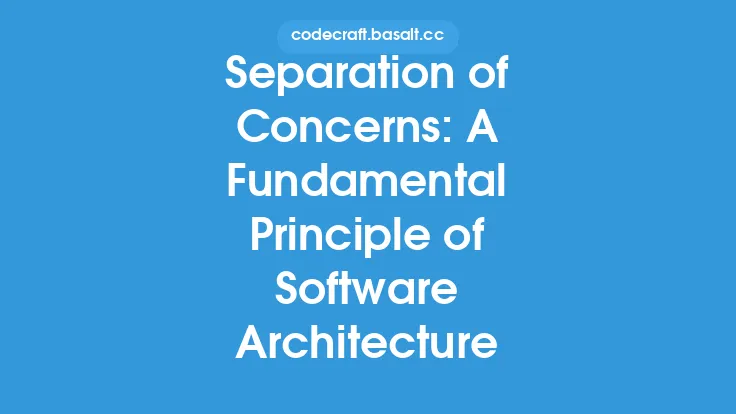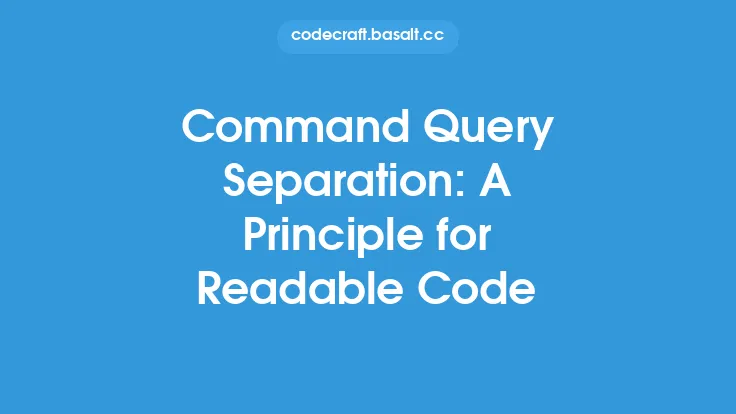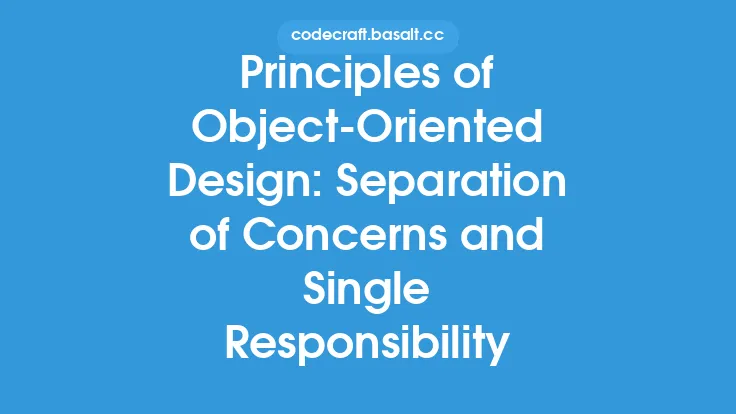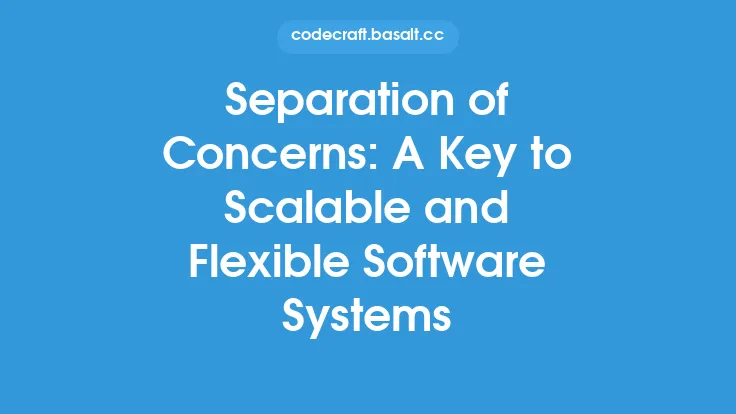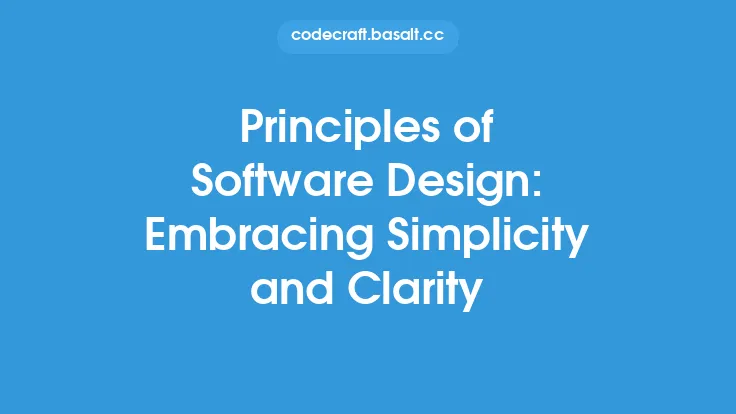Command-Query Separation (CQS) is a fundamental principle of software design that aims to separate methods that perform actions (commands) from methods that retrieve data (queries). This principle was first introduced by Bertrand Meyer, a renowned computer scientist, as part of his work on the Eiffel programming language. The core idea behind CQS is to ensure that methods have a single, well-defined responsibility, making the code more predictable, maintainable, and easier to reason about.
Introduction to Command-Query Separation
In software design, methods can be broadly classified into two categories: commands and queries. Commands are methods that modify the state of an object or perform some action, such as creating, updating, or deleting data. Queries, on the other hand, are methods that retrieve data without modifying the state of the object. The Command-Query Separation principle states that a method should either be a command or a query, but not both. This means that a method should not have side effects, such as modifying the state of an object, if its primary purpose is to retrieve data.
Benefits of Command-Query Separation
The Command-Query Separation principle offers several benefits, including improved code readability, maintainability, and predictability. By separating commands and queries, developers can ensure that methods have a single, well-defined responsibility, making it easier to understand and modify the code. Additionally, CQS helps to reduce the risk of unintended side effects, as methods that retrieve data do not modify the state of the object. This, in turn, makes the code more reliable and easier to test.
Implementing Command-Query Separation
To implement the Command-Query Separation principle, developers should follow a few guidelines. First, methods that retrieve data should not have side effects, such as modifying the state of an object. Second, methods that modify the state of an object should not return data. Instead, they should return a success or failure indicator, such as a boolean value or an exception. Finally, methods should be designed to be either commands or queries, but not both.
Technical Considerations
From a technical perspective, implementing the Command-Query Separation principle requires careful consideration of method design. In object-oriented programming, methods can be classified into two categories: mutators and accessors. Mutators are methods that modify the state of an object, while accessors are methods that retrieve data without modifying the state of the object. To implement CQS, developers should ensure that mutators do not return data and accessors do not have side effects.
Example Use Cases
To illustrate the benefits of the Command-Query Separation principle, consider a simple example. Suppose we have a `BankAccount` class with methods to deposit and withdraw money, as well as a method to retrieve the account balance. In a design that violates CQS, the `deposit` method might return the new account balance, like this: `public int deposit(int amount) { balance += amount; return balance; }`. However, this design is problematic, as the `deposit` method has two responsibilities: modifying the account balance and returning the new balance. A better design would be to separate the `deposit` method into two methods: `public void deposit(int amount) { balance += amount; }` and `public int getBalance() { return balance; }`. This design adheres to the Command-Query Separation principle, making the code more predictable and maintainable.
Best Practices
To ensure that the Command-Query Separation principle is applied effectively, developers should follow a few best practices. First, methods should be designed to be either commands or queries, but not both. Second, methods that retrieve data should not have side effects, such as modifying the state of an object. Third, methods that modify the state of an object should not return data. Finally, developers should carefully consider the responsibilities of each method, ensuring that they have a single, well-defined purpose.
Conclusion
In conclusion, the Command-Query Separation principle is a fundamental principle of software design that aims to separate methods that perform actions from methods that retrieve data. By applying this principle, developers can ensure that methods have a single, well-defined responsibility, making the code more predictable, maintainable, and easier to reason about. By following the guidelines and best practices outlined in this article, developers can effectively implement the Command-Query Separation principle, resulting in better software design and improved code quality.
